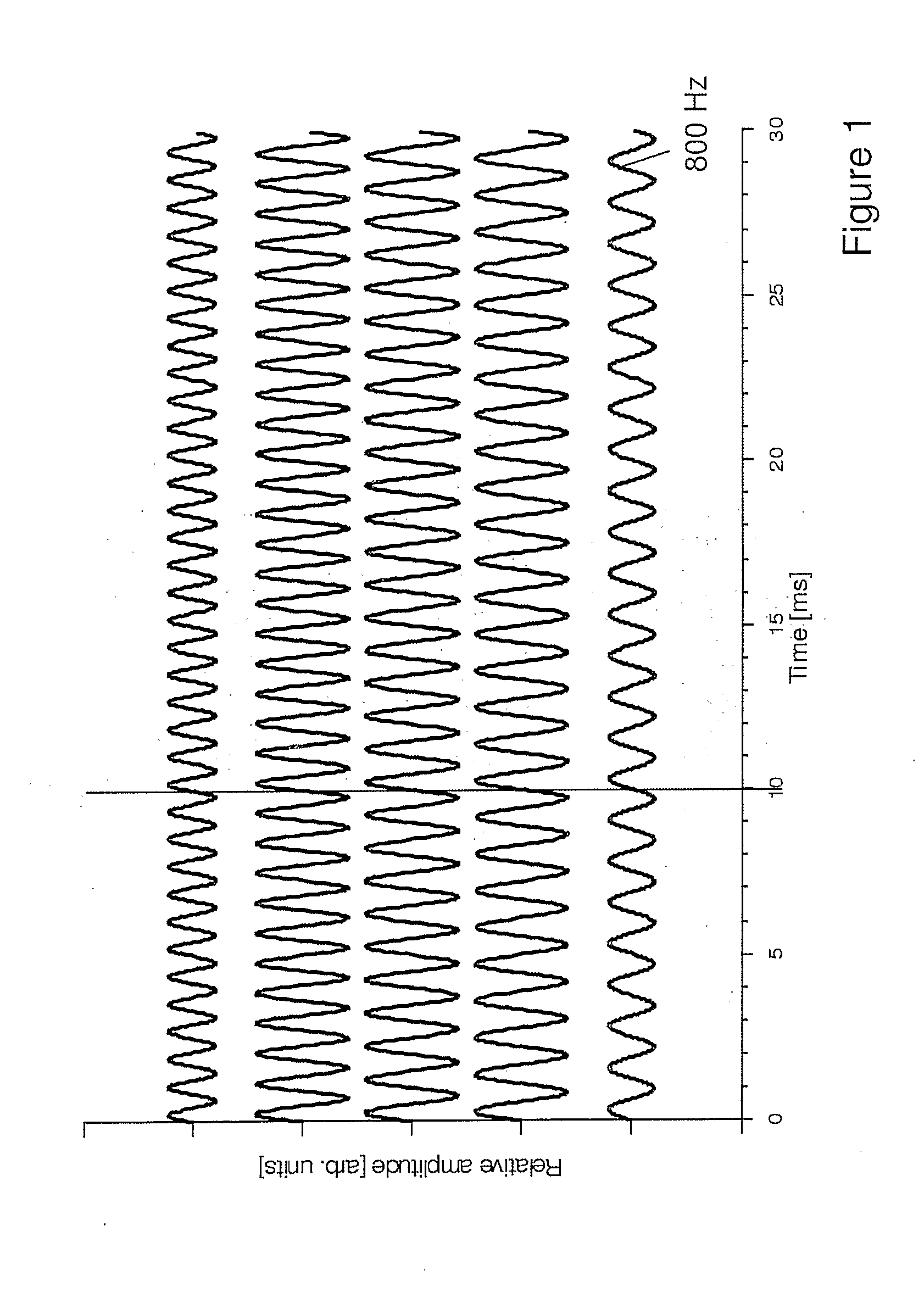Method To Design Acoustic Stimuli In The Spectral Domain For The Recording Of Auditory Steady-State Responses (Assr)
a spectral domain and stimulus technology, applied in the field of objective hearing tests, can solve the problems of difficult to obtain frequency specific information by such stimulus, unfavorable individual test subject participation, and inability to meet the requirements of standard pure-tone audiometry, and achieve the effect of improving the response of test subjects
- Summary
- Abstract
- Description
- Claims
- Application Information
AI Technical Summary
Benefits of technology
Problems solved by technology
Method used
Image
Examples
Embodiment Construction
[0041] As an example, such a stimulus could be generated by five pure tones with the frequencies corresponding to 800, 900, 1000, 1100 and 1200 Hz. In this example, the tones with the lowest and highest frequency have half the amplitude than that of the other three tones and all tones (sinusoidal waveforms) have the same starting phase. The corresponding five pure tones are shown in FIG. 1. In this example the frequency difference between the pure tones is constant (=100 Hz) and the central spectral component has a frequency (=1000 Hz) that is an integer of the frequency difference (=10*100 Hz). The five pure tones are plotted on top of each other in FIG. 2, and the figure demonstrates that with a repetition frequency that corresponds to the frequency difference (viz. 100 Hz) all five pure tones become in-phase (viz. every 10 ms). This repetition frequency is some times referred to as the ‘beat’-frequency. The final stimulus—which is the sum (or the mean) of the five pure tones—is p...
PUM
 Login to View More
Login to View More Abstract
Description
Claims
Application Information
 Login to View More
Login to View More - R&D
- Intellectual Property
- Life Sciences
- Materials
- Tech Scout
- Unparalleled Data Quality
- Higher Quality Content
- 60% Fewer Hallucinations
Browse by: Latest US Patents, China's latest patents, Technical Efficacy Thesaurus, Application Domain, Technology Topic, Popular Technical Reports.
© 2025 PatSnap. All rights reserved.Legal|Privacy policy|Modern Slavery Act Transparency Statement|Sitemap|About US| Contact US: help@patsnap.com



